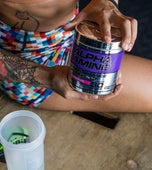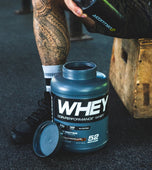Rucking is walking or hiking with weights. Its roots come from the military use of rucksacks, but now, fitness enthusiasts that were bored of being inside have turned to rucking as a fun way to stay in shape.
Benefits of Rucking
Cardiovascular Heart Health
Rucking is a form of aerobic exercise, which is beneficial for the cardiovascular system, which is responsible for the flow of blood and oxygen throughout our body. The American Heart Association recommends that adults do at least 150 minutes of moderate intensity aerobic exercise or 75 minutes of vigorous intensity exercise every week.[1] Aerobic exercise paired with reduced calorie intake is associated with weight loss.[2]
Build Muscle Strength
Rucking can be utilized to increase strength in the different muscle groups involved in this activity. Strength can be increased through the practice of progressive overload, the increase of volume and load, and frequency of an exercise.[3]
One way to achieve this is by gradually increasing the amount of weight that you’re carrying each time you go rucking. Another common form of overloading for this activity is to increase the distance or time that you ruck.
Improve the Body Mind Connection
Because rucking is practiced outdoors typically in places like hiking trails, forests, or mountains it may have a positive effect on your mindset. In some research, outdoor activities like mountain hiking and forest walking have shown positive effects on mood by increasing calmness and vigor. [4,5]
How to Start Rucking
It’s important to have the right gear when you’re going to get started rucking. Rucksacks which are specifically made for the purpose of rucking and weighted vests are popular tools for this activity. Some people also fill sturdy backpacks with weight plates or rocks to make a DIY rucksack.
Comfortable shoes that can help absorb impact and are appropriate for the environments you’ll be rucking in are also important.
These are three simple rucking workouts you can try. Gradually increase the time, distance, and intensity of your rucks over time
The Classic Ruck
- Warm up with a 5-minute walk or jog
- Ruck at a moderate pace for 20-30 minutes.
- Cool down with a 5-minute walk or jog and stretch
Feel the Burn (Incline) Ruck
- Warm up with a 5-minute walk or jog
- Find a nearby hill or staircase and ruck up and down for 30 minutes.
- Cool down with a 5-minute walk or jog and stretch
Speed Demon (Fast Walking) Ruck
- Warm up with a 5-minute walk or jog
- Pick a relatively lighter weight than you normally use for your rucks. And start rucking at a faster pace for 15-20 minutes. You shouldn’t be running or sprinting, your pace will be like a speed walk.
- Cool down with a 5-minute walk or jog and stretch

Having something that can help support hydration will also be crucial for rucking. C4® Energy Non-Carbonated is the perfect drink for this occasion because it comes with a resealable bottle that allows you to sip on it and seal it at your convenience. C4® Energy Non-Carbonated also delivers 0 calories, explosive energy in the form of 200 mg of caffeine anhydrous, and BetaPower® Betaine to help support hydration.
References
[1] https://www.heart.org/en/healthy-living/fitness/fitness-basics/aha-recs-for-physical-activity-in-adults
[2] https://www.ncbi.nlm.nih.gov/pmc/articles/PMC3630467/
[3] https://www.ncbi.nlm.nih.gov/pmc/articles/PMC4215195/
[4] https://www.ncbi.nlm.nih.gov/pmc/articles/PMC5433751/
[5] https://www.ncbi.nlm.nih.gov/pmc/articles/PMC6313311/












